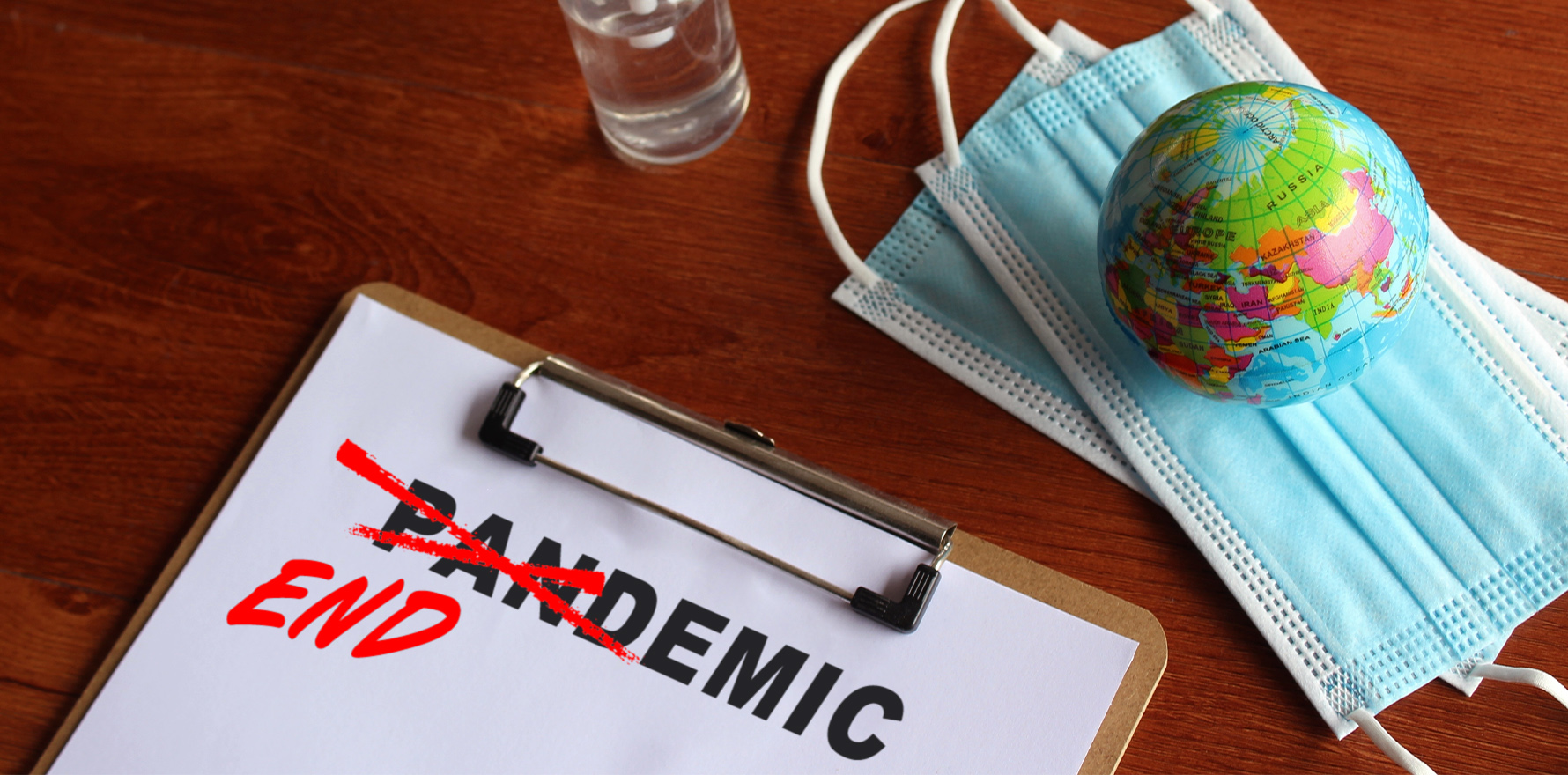This has been predicted since the beginning – but there’s bad news for those who think it’s a fast transition.
“It’s no worse than the flu” has been the rallying cry of covid-deniers, anti-vaccination campaigners, and anyone with a financial or political interest in downplaying the devastating impact that SARS-CoV-2 has had on humanity.
While they have been proven spectacularly wrong on so many fronts, there is one way in which covid might bear a passing resemblance to that other much-loathed spiky viral invader.
When it comes to the question of what happens next with this pandemic, many experts liken our future experience of covid to our present (or pre-covid) experience of influenza: an epidemic that emerges seasonally, wreaks havoc, disappears to mutate quietly in a flock of pigs, poultry or humans, then has another crack next year.
Predictions that covid will eventually become endemic are almost as old as the pandemic itself – originally as a reluctant admission the virus would not be stamped out, more recently as heralding relief from the perpetual state of emergency as outbreaks threaten to engulf our health systems.
But assertions that covid is going to become just another endemic disease that we have to live with reflect confusion over what the terms “epidemic” and “endemic” actually mean, says epidemiologist Professor Margaret Hellard, deputy director of the Burnet Institute, who specialises in the epidemiology of infectious disease.
“There’s been careless use of language,” she says of the debate.
An epidemic, according to Professor Hellard, is defined by rolling waves of infection in which the reproductive number regularly goes above one – signifying that each new case infects more than one other person. These waves or outbreaks eventually tire themselves out when the level of immunity from people getting infected or getting vaccinated rises to the point where it overcomes the transmissibility of the virus. “But then once that immunity wanes, you get rolling waves again,” she says. A pandemic is just an epidemic that spans multiple countries.
This is the pattern seen throughout history with diseases such as smallpox, polio, measles and influenza. Even the 1918 influenza pandemic came and went in multiple waves – three in the United States, for example – before fading away.
Epidemics come about because of three things: viral factors, host factors and environmental factors, says virologist Dr Lara Herrero, from the Institute for Glycomics at Griffith University. The most significant viral factor is its transmissibility, which has really showed itself during the Omicron wave.
“Then there’s host factors, things like your immunity, age, or various other things that make you susceptible or immune to a virus,” Dr Herrero says. Finally, environmental factors such as temperature, humidity, contamination and human behaviour also affect how fast and far an infection spreads. “An epidemic occurs when all those three factors combine to allow that virus to circulate at a greater level than is normally considered endemic.”
The concept of “endemic” has been thrown around a lot recently, but Professor Hellard says covid is a long, long way from becoming a disease that would truly meet the criteria of endemicity.
“Endemic is when a disease is in a population, where it transmits but it does not have outbreaks,” she says. Malaria is considered an endemic disease in many parts of the world.
Even though an endemic disease might have seasons – malaria infections go up when mosquitos are more prevalent – it otherwise exists at a reasonably steady background rate of infection.
The problem with people suggesting that covid is becoming endemic is that the transition is incredibly slow, if it happens at all.
“To think that one quickly morphs into another is a misunderstanding of what happens with infectious diseases,” Professor Hellard says. She can’t think of any infectious disease in Australia that has made that transition from epidemic to endemic in modern history. The common cold, caused by rhinoviruses, may well be endemic – albeit with some seasonality – but it has existed for aeons.
Keeping a lid on it
Rather than becoming endemic, an epidemic can be controlled, for example with vaccines and public health interventions such as mask-wearing and social distancing that bring the reproductive rate down below one.
In very rare cases, an infectious disease causing epidemics can be eliminated entirely, as has occurred with smallpox and has nearly been achieved with polio. But elimination requires extremely effective vaccines. While the covid vaccines so far have been astonishingly effective at preventing severe disease and death, they are less effective at stopping transmission and are hamstrung by waning immunity and a virus that is constantly mutating to get around them.
What is needed is a multi-valent jab, the vaccine equivalent of Tolkein’s one ring to rule them all. The World Health Organisation recently called for researchers to strive towards a “pan-SARS-CoV-2” vaccine as well as longer-lasting vaccines that would do away with the need for boosters.
A parallel goal is a vaccine that blocks infection altogether. This would give the virus fewer chances to replicate, which should slow down the proliferation of variants.
That would be called a “sterilising” vaccine, as it would confer sterilising immunity, the kind that kills pathogens before they can get any foothold in the body.
“Apparently, there’s no reason why we shouldn’t be able to do that,” says epidemiologist Professor Rod Jackson from the University of Auckland – although “we need to come up with a better term” for it.
The measles, smallpox and even HPV vaccines achieve sterilising immunity, or close to it.
But the 1918 influenza pandemic came to an end without vaccines. Back then, humanity didn’t even have the benefit of the high-quality medical care that means most people who get infected survive to benefit from at least short-term immunity.
It’s not well understood why the 1918 pandemic did burn itself out, but Professor Jackson says one thing that humanity had going for it at the time was less mobility.
“Initially, they didn’t [have even this advantage] because it was 1918 and soldiers were moving backwards and forwards,” he says. “But by the time of the third wave in 1919, most people were pretty much staying in one place.”
Given the speed with which each new SARS-CoV-2 variant of concern has travelled from its birthplace to the rest of the world, aided by global travel and trade, it raises the question of how this pandemic might have played out had travel not been so easy.
Australia did achieve a high-level of control over covid – almost local elimination – for a long time by reducing mobility with stay-at-home orders and closed borders. But that’s not a long-term solution, Professor Hellard says. “We could do elimination for a while but it’s just incredibly difficult.”
In the absence of vaccines, the 1918 pandemic may also have come to a close thanks to infection-acquired immunity.
This brings up the idea of herd immunity – another term that bandied around without real understanding of what it signifies, Professor Hellard says.
The problem is that while herd immunity can be achieved, to do so without vaccines comes at a very high price. “You can’t get the level of your population infection up high enough without causing significant overwhelming of your health systems,” she says. Even with vaccines and high levels of infection, there’s still the issue that variants such as Omicron are able to evade both vaccine-derived and infection-acquired immunity, although vaccines at least continue to provide strong protection against severe disease and death.
What’s next?
So what now for Australia? Professor Herrero says we have a lot going for us. “We have excellent access to vaccines, we have great vaccine coverage, our healthcare system is still free, we have free access to antivirals, and we in our country, can get circulating levels down quite low,” she says. “But not all countries are this fortunate.”
Covid vaccine coverage in low and middle-income countries still lags a long way behind that of wealthy countries; just 26% of the Indian population has had two doses of vaccine, and in Afghanistan the figure is 8%. And as long as covid is circulating in any numbers anywhere in the world, there’s the risk of variants. With globalisation and travel, those variants could be at any point in the world within a day.
“I think we are in it, there’s no changing that,” Professor Herrero says. “Now we have to do the best that we can do to prevent the loss of life and not just the loss of life, but to prevent long covid and the morbidity that that SARS-CoV-2 can cause to our general population.”







